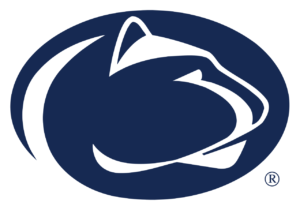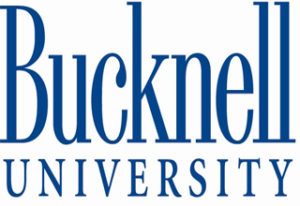By Bruce Collier, Vice President
Large Enterprise Operations, Xerox Corporation
“The only two-time recipient of the Nobel Prize attended Oregon State University.”
“RIT’s ‘Little Guy’ overcame the odds to make it to the Frozen Four.”
“Harris Hill Elementary didn’t want to lose students during the transition to new Common Core standards.”

What do these three educational stories have in common? Xerox technology. As a company, we’ve set out to improve student learning and the conditions in which they learn; from the very first day of preschool through college graduation. But there is more to be done.
Graduates leaving universities today are entering a very different world than the one from just 10 short years ago. Today’s “real world” is marked by uncertainty, competition and rapid change. The path to success requires not only a strong education from grade school through university, but a thirst for lifelong learning and growth thereafter.
This is why our commitment runs so deep for supporting programs that help to shape the next generation of professionals and provide the future workforce with the fundamental tools to succeed. Our sponsorship of the annual SkillsUSA National Championship, for example, provides real-world education and training to jumpstart the careers of today’s youth by simulating the environment inside a real-world printing company.
Unfortunately, it’s not always roses. Most educational systems are challenged with underlying issues that hamper student learning, such as overcrowded classrooms, shrinking budgets, and a disconnect between education and technology.
However, we have found that by working with our customers whose in-plant operations serve the education sector, it really is possible to make a difference in the lives of students and teachers.
Simply streamlining back-office tasks helps schools meet government mandates and manage student data and performance better. This ultimately improves academic outcomes. When schools cut outsourcing costs, for example, they recover funds that can be reinvested in the classroom and their students.
But don’t just believe me! Check out these 10 educational institutions that have employed these strategies to improve learning across their teacher and student populations:
 University of Louisville had escalating costs for supplies, salaries, equipment, and institutional overhead, which put the university’s Printing and Copier Management unit into a very tight spot. With a seven-figure deficit to tackle, vendors were asked to help turn the situation around, and Xerox did not hesitate to step up to the plate with cost savings.
University of Louisville had escalating costs for supplies, salaries, equipment, and institutional overhead, which put the university’s Printing and Copier Management unit into a very tight spot. With a seven-figure deficit to tackle, vendors were asked to help turn the situation around, and Xerox did not hesitate to step up to the plate with cost savings.
 California State University at Fullerton integrated Xerox printers to enable students and staff to print from devices across campus. Since using Xerox for scanning documents, the university has reduced paper costs by $250,000.
California State University at Fullerton integrated Xerox printers to enable students and staff to print from devices across campus. Since using Xerox for scanning documents, the university has reduced paper costs by $250,000.

The City of New Haven and New Haven Public Schools had more than 1,000 single function printers making paper, toner and repair costs high. By installing Xerox multifunction devices, they are slated to save about $3.5 million over the next five years.
 The Multimedia and Print Center at Penn State University became outdated and was no longer seen as a commodity on campus, so recruitment and fundraising projects were outsourced. The center, working under financial constraints, revamped with Xerox technology and are now attracting new customers.
The Multimedia and Print Center at Penn State University became outdated and was no longer seen as a commodity on campus, so recruitment and fundraising projects were outsourced. The center, working under financial constraints, revamped with Xerox technology and are now attracting new customers.
![]() Harris Hill Elementary School needed to adjust to the new Common Core standards, but didn’t want to lose students throughout the transition. Xerox’s educator support system frees up teachers to focus on lesson plans and teaching rather than technology.
Harris Hill Elementary School needed to adjust to the new Common Core standards, but didn’t want to lose students throughout the transition. Xerox’s educator support system frees up teachers to focus on lesson plans and teaching rather than technology.

The University of Edinburgh has been “influencing the world since 1583,” but their print services for their 35,000 student campus became outdated. Since switching to Xerox, the university can spend less time on administrative tasks and can refocus on education.
 Oregon State Printing and Mailing Services prints hundreds of thousands of pages each year for a variety of tasks from teaching tools to admission recruiting pieces. Xerox’s digital production press delivers top quality images, strong service and support, and media latitude to meet those demands.
Oregon State Printing and Mailing Services prints hundreds of thousands of pages each year for a variety of tasks from teaching tools to admission recruiting pieces. Xerox’s digital production press delivers top quality images, strong service and support, and media latitude to meet those demands.
 Rochester Institute of Technology’s school colors, orange and brown, create challenges when printing content pieces because they are difficult colors to achieve with most four-color technologies. So, the university found a printer that could achieve consistent color and increase capabilities for their school’s materials.
Rochester Institute of Technology’s school colors, orange and brown, create challenges when printing content pieces because they are difficult colors to achieve with most four-color technologies. So, the university found a printer that could achieve consistent color and increase capabilities for their school’s materials.
 For more than 20 years, Xerox has been a part of Bucknell University’s printing team. The university’s Office of Publications, Print and Mail, relies on Xerox devices to print 65 percent of the university’s nearly 7 million pages annually.
For more than 20 years, Xerox has been a part of Bucknell University’s printing team. The university’s Office of Publications, Print and Mail, relies on Xerox devices to print 65 percent of the university’s nearly 7 million pages annually.
 Quality, speed, price – these are the tenets Ithaca College was looking for – and Xerox provided. With new devices and the installation of Xerox Web Services, the print shop’s director said it was “… the smartest thing we’ve done in 30 years.”
Quality, speed, price – these are the tenets Ithaca College was looking for – and Xerox provided. With new devices and the installation of Xerox Web Services, the print shop’s director said it was “… the smartest thing we’ve done in 30 years.”



